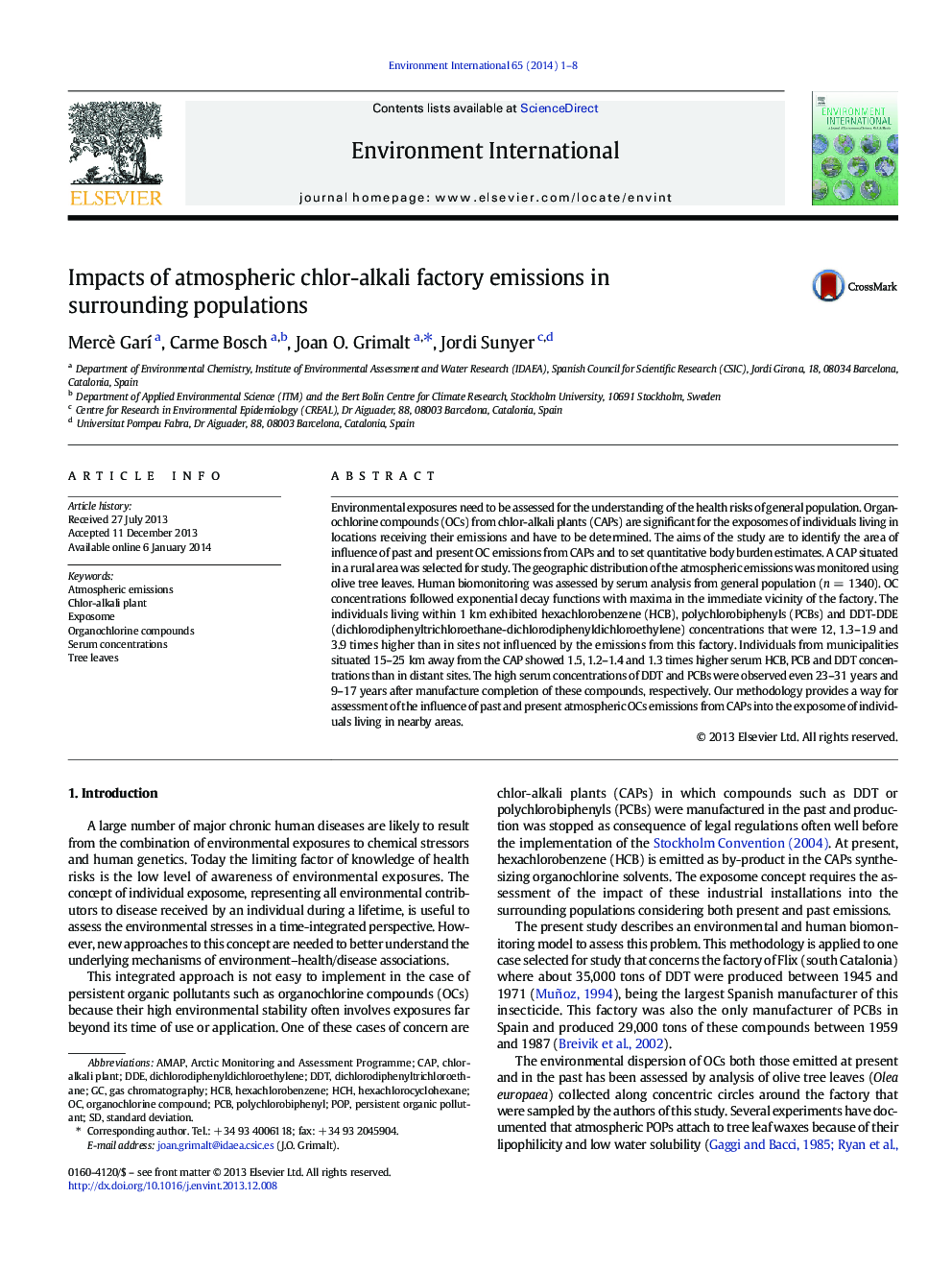| Article ID | Journal | Published Year | Pages | File Type |
|---|---|---|---|---|
| 4422800 | Environment International | 2014 | 8 Pages |
•The atmospheric emissions of HCB, PCBs and DDT from a chlor-alkali plant are assessed.•Environmental and human biomonitoring models (olive tree leaves and serum) are used.•Serum OC concentrations are higher at 15–25 km away from the factory than background.•Environmental gradients in passive samplers involve negative exponential distributions.
Environmental exposures need to be assessed for the understanding of the health risks of general population. Organochlorine compounds (OCs) from chlor-alkali plants (CAPs) are significant for the exposomes of individuals living in locations receiving their emissions and have to be determined. The aims of the study are to identify the area of influence of past and present OC emissions from CAPs and to set quantitative body burden estimates. A CAP situated in a rural area was selected for study. The geographic distribution of the atmospheric emissions was monitored using olive tree leaves. Human biomonitoring was assessed by serum analysis from general population (n = 1340). OC concentrations followed exponential decay functions with maxima in the immediate vicinity of the factory. The individuals living within 1 km exhibited hexachlorobenzene (HCB), polychlorobiphenyls (PCBs) and DDT-DDE (dichlorodiphenyltrichloroethane-dichlorodiphenyldichloroethylene) concentrations that were 12, 1.3–1.9 and 3.9 times higher than in sites not influenced by the emissions from this factory. Individuals from municipalities situated 15–25 km away from the CAP showed 1.5, 1.2–1.4 and 1.3 times higher serum HCB, PCB and DDT concentrations than in distant sites. The high serum concentrations of DDT and PCBs were observed even 23–31 years and 9–17 years after manufacture completion of these compounds, respectively. Our methodology provides a way for assessment of the influence of past and present atmospheric OCs emissions from CAPs into the exposome of individuals living in nearby areas.
Graphical abstractFigure optionsDownload full-size imageDownload as PowerPoint slide
